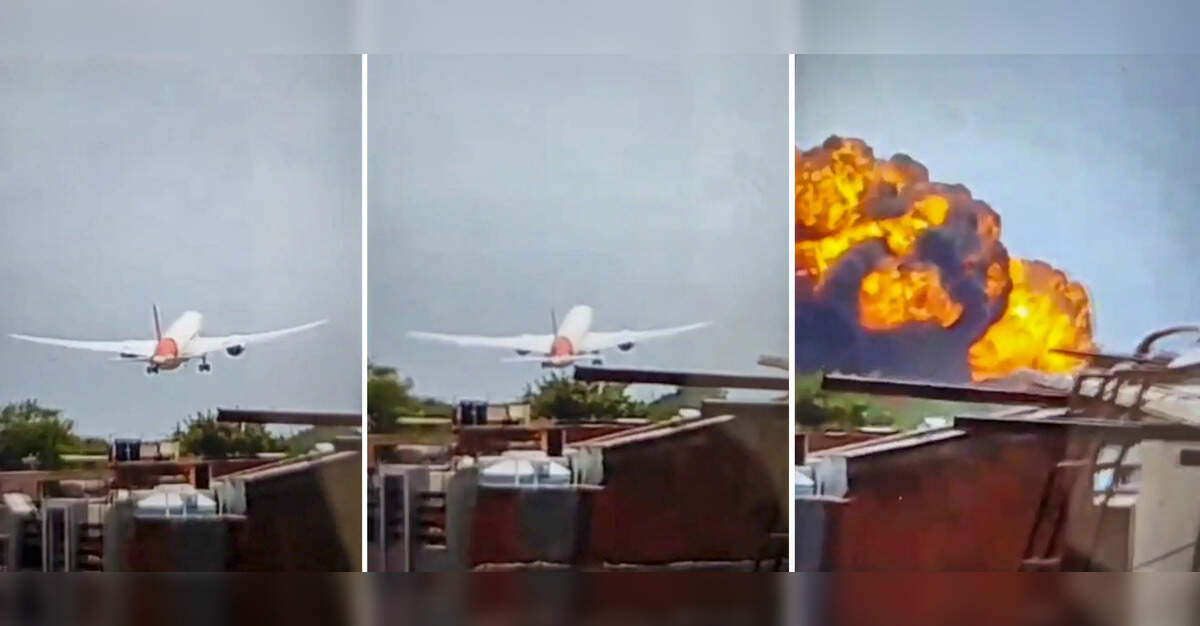On June 16, 2025, just days after one of India’s deadliest aviation disasters, another Air India flight raised alarm bells. Flight AI315, a Boeing 787-8 Dreamliner en route from Hong Kong to New Delhi, turned back less than 30 minutes after takeoff due to a suspected fuel system warning. The aircraft landed safely, and no passengers or crew were harmed, but the incident has reignited scrutiny over the airline’s safety protocols and sparked a troubling question: Could a similar fuel-related issue have contributed to the catastrophic crash of Air India Flight 171 on June 12, 2025, which killed 241 of its 242 occupants? As investigators probe the latest scare, the finger-pointing has begun, with questions of responsibility swirling around Air India, Boeing, and regulatory bodies.
The AI315 Incident: A Precautionary Retreat
Flight AI315 departed Hong Kong International Airport at approximately 12:20 p.m. local time, carrying an unspecified number of passengers. Within 30 minutes, the pilots reported a technical anomaly linked to the fuel system, prompting a decision to return. Flight tracking data from websites like Flightradar24 showed the plane reaching an altitude of 22,000 feet before descending back to Hong Kong, landing safely at 1:15 p.m. Air India attributed the turnaround to a “technical issue” and assured the public that the aircraft was undergoing checks “as a matter of abundant precaution.” The airline also arranged alternative flights for affected passengers, emphasizing efforts to minimize inconvenience.
The timing of the incident, occurring just four days after the Ahmedabad crash, amplified public concern. The AI315 aircraft, a seven-year-old Boeing 787-8 Dreamliner—the same model as the doomed Flight 171—underscored the eerie parallel. Audio recordings from air traffic control, reviewed by media outlets, captured the pilot requesting to “stay closer to Hong Kong” to address the problem, signaling a cautious approach. While the lack of casualties offered relief, the event cast a shadow over Air India’s fleet, already under intense scrutiny following the earlier tragedy.

The Shadow of Air India 171
The context of AI315 cannot be divorced from the June 12 disaster. Air India Flight 171, bound for London Gatwick from Ahmedabad, crashed 32 seconds after takeoff, killing 241 passengers and crew, with only one survivor, Vishwash Kumar Ramesh. The plane plowed into a medical college hostel, claiming 19 additional lives on the ground. Preliminary reports from India’s Aircraft Accident Investigation Bureau (AAIB), released on July 12, revealed that the fuel control switches for both engines were flipped from “RUN” to “CUTOFF” almost simultaneously post-takeoff. Cockpit voice recordings captured a pilot asking, “Why did you cut off?” with the other denying responsibility, hinting at confusion or error.
This revelation has fueled speculation that a fuel system malfunction or human oversight might have triggered the crash. The AAIB’s report ruled out immediate mechanical failure or design flaws, noting no urgent advisories from Boeing or GE Aerospace, the engine manufacturer. However, the lack of clarity on how the switches moved—accidentally, intentionally, or due to a glitch—has left room for doubt. The AI315 incident, with its reported fuel system warning, has intensified calls to revisit whether a similar issue underpinned Flight 171’s fate.
A Pattern of Concern?
Aviation experts are divided on the implications. Some, like safety analyst Geoffrey Dell, argue that the fuel switches on a 787 require deliberate action, protected by a metal guard, making an accidental flip unlikely. Others suggest a potential software or sensor error could have misreported the switch positions, a theory supported by the AI315 pilots’ cautious response to a warning. The recurrence of fuel-related alerts across Air India’s Dreamliner fleet, as noted in recent inspections, raises red flags. In 2018, the FAA issued a bulletin about possible fuel system disengagement risks on 787s, yet Air India maintains it adhered to safety standards.
The Ahmedabad crash site yielded evidence of both engines relighting briefly before impact, suggesting the switches were returned to “RUN” too late to avert disaster. This detail mirrors the AI315 scenario, where the crew opted for an early return rather than risking a prolonged flight. Critics question whether Air India’s maintenance practices or Boeing’s design oversight might be at fault, especially given the airline’s history of technical issues since the Tata Group took over in 2022. The lack of a multi-operator message (MOM) from Boeing post-Ahmedabad crash further complicates the narrative, hinting at an reluctance to acknowledge a systemic problem.
Responsibility: Who Bears the Blame?
The question of accountability looms large. Air India has faced backlash for its handling of both incidents, with passengers on AI315 reporting minimal communication during the return. The airline’s promise of additional safety checks on its 33 Dreamliners has been met with skepticism, especially as regulators like India’s Directorate General of Civil Aviation (DGCA) have not mandated a fleet grounding. Some point to Boeing, arguing that the 787’s fuel system design may harbor vulnerabilities, particularly after the 2018 FAA warning. Yet, Boeing’s silence on AI315 and the absence of a CANIC (Continued Airworthiness Notification) suggest confidence in the aircraft’s integrity—or a reluctance to admit liability.
Regulatory oversight is also under scrutiny. The DGCA’s failure to enforce stricter protocols post-Ahmedabad, despite the crash’s severity, has drawn criticism. India’s aviation boom, with plans to rival hubs like Dubai, hinges on robust safety frameworks, yet incidents like these expose gaps. Posts found on X reflect public frustration, with users questioning whether cost-cutting or inadequate training contributed to the troubles, though such claims remain unverified and should be treated cautiously.
Families of Flight 171 victims, already reeling from misidentification scandals, demand answers. The mix-up of remains sent to the UK has compounded their grief, with lawyers urging UK Prime Minister Sir Keir Starmer to address the issue with Indian counterparts. They argue that if fuel system flaws are confirmed, liability could extend beyond Air India to manufacturers and regulators, necessitating a global review of 787 operations.
A Critical Perspective
The official narrative—that both incidents involve isolated technical glitches—strains credulity given the timing and shared aircraft model. The AAIB’s preliminary report on Flight 171 avoided definitive conclusions, deferring to a year-long investigation, which some see as a delay tactic to shield stakeholders. The lack of transparency about AI315’s specific fuel warning fuels suspicion that Air India and Boeing are downplaying a broader issue. Aviation historian Mohan Ranganathan has warned that the proximity of tall buildings to Ahmedabad’s runway, combined with potential fuel system vulnerabilities, could indicate systemic risks ignored by regulators.
Moreover, the rush to resume normal operations post-Ahmedabad—evidenced by AI315’s scheduled departure—suggests a prioritization of profit over safety. The Tata Group’s ambitious fleet revamp, including the 787s, may have outpaced adequate maintenance infrastructure. While no casualties occurred on AI315, the incident serves as a stark reminder of the Ahmedabad tragedy, where 32 seconds separated a routine flight from a national mourning.
The Road Ahead
As of July 24, 2025, the AAIB continues its probe into Flight 171, with AI315’s inspection results still pending. The aviation community awaits clarity on whether the fuel system warning was a false alarm or a symptom of a deeper flaw. For passengers, the incidents erode trust in Air India, a carrier once a symbol of Indian pride. For regulators and manufacturers, the stakes are higher: failure to address these concerns could jeopardize India’s aviation ambitions and the global reputation of the 787.
The heart of the matter lies in accountability. If fuel issues indeed linked AI315 and Flight 171, the responsibility could span pilot error, maintenance lapses, design defects, or regulatory negligence. Until the full truth emerges, the shadow of doubt will linger over every Dreamliner takeoff, a haunting echo of the lives lost and the lives spared by a timely turn back.





